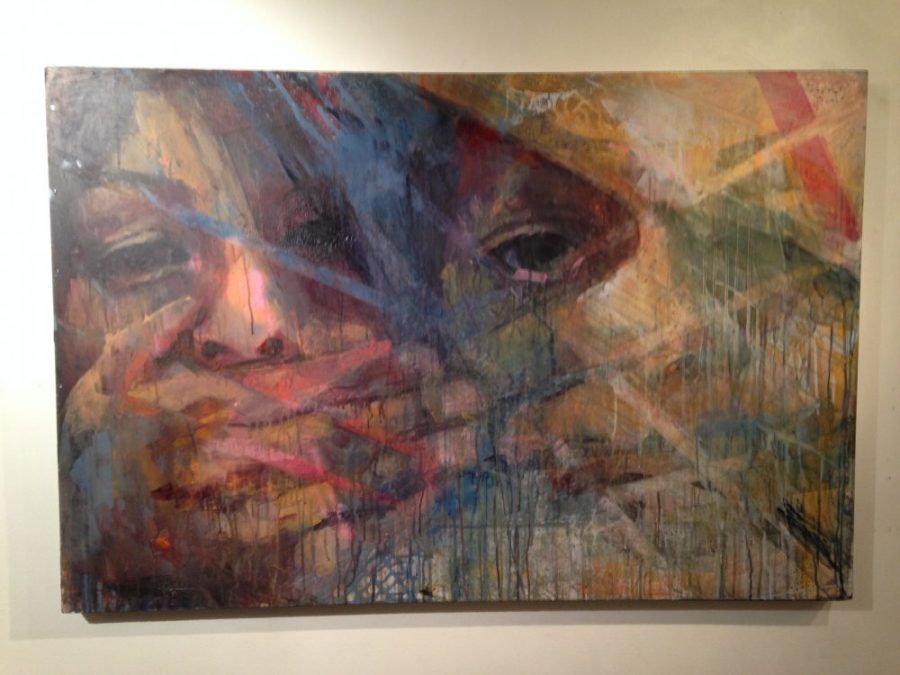Cheryl Sandoval’s art exhibit “Steps from the Reservation” works alongside a body of Native American rhetorical practices. Sandoval’s aim is to combat settler colonialism by refusing to be ignored. The pieces in the exhibit present the Native American body as contemporary, as real, and as human.
Sandoval, is a recent graduate of the U’s art program with an emphasis on painting and drawing. According to her biography in the exhibit when it was on display at Mestizo Coffeehouse, Sandoval has claims to both Jicarilla Apache and Navajo identities and is originally from Dulce, New Mexico, a small town located on the Jicarilla Apache Reservation. Each painting is based on family photographs and memories of her life on the reservation. As the introduction to the exhibit explains, “The pieces that form this exhibition all draw inspiration from Sandoval’s experience as a member of the Jicarilla Apache Nation.”
Though the exhibit prioritizes the images of people, likely from Sandoval’s past, almost every piece present contains a scene from nature. Sometimes these scenes take up the entirety of the image or are prominently displayed; at other times, —especially in those containing multiple human figures— they take more subtle positions, all the while serving as calming focus points in the midst of action taking place elsewhere in the paintings.
Sandoval’s painting “Speak No Evil, See No Evil” is the most violent painting in the exhibit, though that is no hard thing given the peacefulness in most of the others. The painting shows two figures, with one figure’s mouth covered by the other’s hand. In many ways the figures seem to represent the very real silencing of Native American voices that occurs on a daily basis. However, even in the midst of the painting’s sorrow, a tranquil pond beneath a stone bridge can be seen in the painting’s right hand corner.
Another piece, “Grandmother Knows Best“ contains two bodies, an older grandmother and a young child; and are the focus of the painting. Sandoval conveys meaning by using different color schemes directly on the two bodies. Here these schemes are used to illustrate the literal as well as metaphorical differences between the two bodies and the generations of the Jicarilla Apache people they represent. No nature scene takes up room here; rather the color scheme itself, yellow and blue, seems reminiscent of natural scenery.
Different silhouettes of a young man, resolving into focus as each silhouette progresses from the last on the left to the next on the right, culminating in a final solidified figure, are featured in “Stepping Away from Home.” The first silhouette is barely discernible, which can be seen as playing with the idea of the Native American as vanishing. However, instead of progressively vanishing in the way dominant society has come to expect, the youth only comes more firmly into focus in his forward motion. To further ensure the viewer understands that this young man has not lost himself in his progress away from the reservation he once called home, Sandoval painted a small scene in the vicinity of where the youth’s heart would lie. Within this scene floats a dock leading to a body of water, watched over by a sun setting beside a small, forested mountain.
To view more of Sandoval’s artwork follow her on Instagram at @clsandyval. Mestizo Coffeehouse is located at 631 W. North Temple in Salt Lake City, and the exhibit was on display there from Nov. 20, 2015-Jan. 9, 2016.


